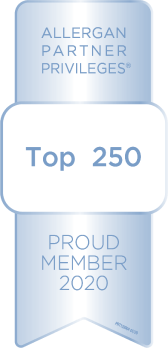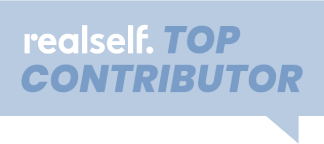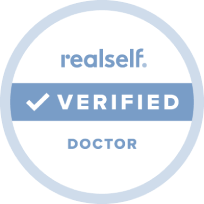These issues may be the result of genetics or a congenital deficiency or an injury to your chin.
Cheek augmentation is most commonly used as a way to rejuvenate the aging face, restoring volume and the appearance of higher cheekbones that dissipate and cause cheeks to look flattened over time.
But it’s not just about your chin or cheeks. The way your face looks is a composite of all your features, including your bone structure, muscles and other soft tissues, and skin. If one visible feature is out of balance, it changes your entire appearance. For example, if you have a small chin, your nose may appear larger than it really is, and if your nose seems overly-small that may be because your chin is more prominent.
So while chin and cheek augmentation can work on their own (and, often, together) to refine overall facial harmony, these procedures are often performed as part of a facelift or rhinoplasty surgery, to accomplish more comprehensive improvement in facial balance.
Chin Augmentation
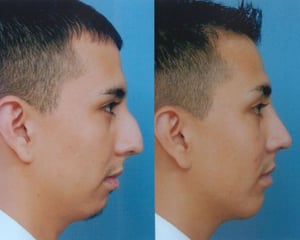 If you have a weak chin and the amount of change you wish to make is small enough, Dr. Raval may recommend using soft-tissue filler instead of an implant. Fillers are temporary whereas an implant is permanent, but they also offer flexibility. You can more or less change when you renew the filler, and Dr. Raval can also adjust the filler amount and placement to match other changes in your face that come naturally with age.
If you have a weak chin and the amount of change you wish to make is small enough, Dr. Raval may recommend using soft-tissue filler instead of an implant. Fillers are temporary whereas an implant is permanent, but they also offer flexibility. You can more or less change when you renew the filler, and Dr. Raval can also adjust the filler amount and placement to match other changes in your face that come naturally with age.
For a surgical chin implant, Dr. Raval may first take an X-ray (digital scan?) of your face and chin, to see exactly where and how much to modify the shape of your chin, based on your aesthetic goal.
This is an outpatient procedure, performed under general anesthetic or local anesthetic with sedation. During the procedure, he will make an incision either under your chin or inside your mouth, then create a pocket underneath the muscles, right in front of the chin bone. He will position the implant in the pocket and secure it to the chin bone, closing with sutures. Even with an outside incision, any scarring will be nearly invisible. As a stand-alone procedure, chin implant surgery takes about an hour.
Implants come in various sizes and shapes, allowing Dr. Raval to precisely tailor your procedure so that you get the improvement you desire with natural looking results. Implants come in a variety of materials, too, but Dr. Raval prefers to use silicone for chin augmentation because it has the longest track record for safety.
Cheek Augmentation
Implants are also available for cheek augmentation, but Dr. Raval no longer uses them. Instead he recommends filler. As noted earlier, fillers are more versatile and they are also faster and less invasive than surgery and the cost if considerably lower.
Chin and Cheek Augmentation Risks
Every invasive procedure poses certain risks. For chin implant surgery, risks are minor. The most common include:
- Bleeding and swelling, which will resolve after a few days.
- Infection, though this risk is extremely small. Dr. Raval always performs surgical procedures in top-of-the-line, accredited facilities that ensure maximum health and safety protection.
- Implant shifting, which could occur due to swelling or trauma to the face at some point in the future. This risk is very slight.
Post-Surgery and Recovery
Following chin implant surgery, you will go home with a few stitches -- protected with a bandage if the incision was under your chin. You will also receive written instructions on how to care for the procedure site – it is essential that you make sure you understand these instructions and that you follow them exactly. That way, your recovery will be fast and smooth as possible.
You can expect some swelling for about 5 days to a week, and you can likely return to work and simple daily activities within a week or less. You’ll have to wait 3-4 weeks to resume more strenuous activities.
You shouldn’t have much post-procedure discomfort, but Dr. Raval will prescribe pain medication and you can use a cold compress to help reduce initial discomfort and swelling. You will have to sleep face-up and with your head elevated for at least a week, maybe two. This protects your stitches and helps reduce swelling. You will also have to speak and chew carefully at first, to further protect your chin as it heals
With chin or cheek augmentation using fillers, you will have minimal downtime, though you should take life a little easier for the first day or two. You may experience mild swelling or bruising, but that will dissipate soon.
Chin and Cheek Augmentation Results
Because Dr. Raval tailors your procedure just for you, you can expect to see results that are natural looking and virtually undetectable to others. Implants provide permanent results, so your new chin contour will not change over time as your face ages in other areas. Fillers are temporary because they are ultimately absorbed by the body. You will need a refresher treatment every year or two, depending on the filler Dr. Raval uses.
You will begin to see changes once post-op swelling goes down, and you should see final results within a month, or over the next few months for implants. If you have an implant, when you touch your chin it will feel pretty much the same as your natural chin bone.
Who is a Good Candidate for Chin and Cheek Augmentation?
Age is not a factor when it comes to chin and cheek augmentation, as long as you are a fully-grown adult. So you may be a good candidate for one or both of these procedures if you simply don’t like the size or shape of your chin or fuller, more rounded cheeks.
That said, cheek augmentation is most often requested by patients whose cheeks have flattened with age. This is why this procedure can nicely complement a facelift. A facelift primarily addresses the aging jawline, jowl and neck to rejuvenate the lower face, so adding cheek augmentation rejuvenates the middle of the face as well.
Other factors that make you a good candidate include:
- Good overall health
- Non-smoker
- Realistic expectations about results
Cost of Chin and Cheek Augmentation
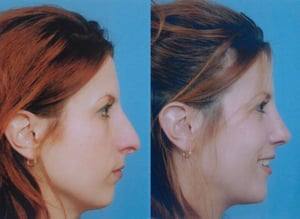 Because every surgical procedure is individually tailored, cost depends on the details of your procedure. In general, chin augmentation at Raval Facial Aesthetics and ENT runs between $5,030 - $5,510*. This includes the surgeon’s fee as well as the surgical facility, anesthesia, medical supplies, etc. You will be given a personal estimate before you make a final decision about your surgery.
Because every surgical procedure is individually tailored, cost depends on the details of your procedure. In general, chin augmentation at Raval Facial Aesthetics and ENT runs between $5,030 - $5,510*. This includes the surgeon’s fee as well as the surgical facility, anesthesia, medical supplies, etc. You will be given a personal estimate before you make a final decision about your surgery.
Chin augmentation procedures are considered cosmetic and are not covered by most health insurance policies. You should always speak with your insurance provider before surgery to make sure you fully understand your personal coverage.
As far as cheek augmentation, since we have moved away from surgical remediation for cheeks and towards filler injections as a solution, our pricing for cheek augmentation would mirror our filler injectable pricing.
*Pricing as of September 2019 and subject to change with time.
Is Chin and Cheek Augmentation Right for You?
Restoring a more harmonious balance to your facial appearance can boost self-confidence, and that can be a life-changer. Perhaps chin and/or cheek augmentation is all you need to accomplish that. By scheduling a personal consultation with Dr. Raval, you can discuss your face and your aesthetic goals and then decide together if one or both of these procedures are right for you.
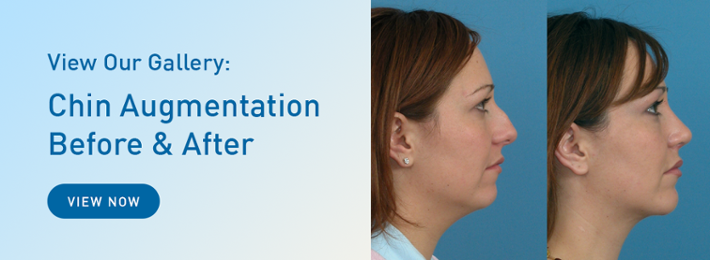



 If you have a weak chin and the amount of change you wish to make is small enough, Dr. Raval may recommend using soft-tissue filler instead of an implant. Fillers are temporary whereas an implant is permanent, but they also offer flexibility. You can more or less change when you renew the filler, and Dr. Raval can also adjust the filler amount and placement to match other changes in your face that come naturally with age.
If you have a weak chin and the amount of change you wish to make is small enough, Dr. Raval may recommend using soft-tissue filler instead of an implant. Fillers are temporary whereas an implant is permanent, but they also offer flexibility. You can more or less change when you renew the filler, and Dr. Raval can also adjust the filler amount and placement to match other changes in your face that come naturally with age. Because every surgical procedure is individually tailored, cost depends on the details of your procedure. In general, chin augmentation at Raval Facial Aesthetics and ENT runs between $5,030 - $5,510*. This includes the surgeon’s fee as well as the surgical facility, anesthesia, medical supplies, etc. You will be given a personal estimate before you make a final decision about your surgery.
Because every surgical procedure is individually tailored, cost depends on the details of your procedure. In general, chin augmentation at Raval Facial Aesthetics and ENT runs between $5,030 - $5,510*. This includes the surgeon’s fee as well as the surgical facility, anesthesia, medical supplies, etc. You will be given a personal estimate before you make a final decision about your surgery.


